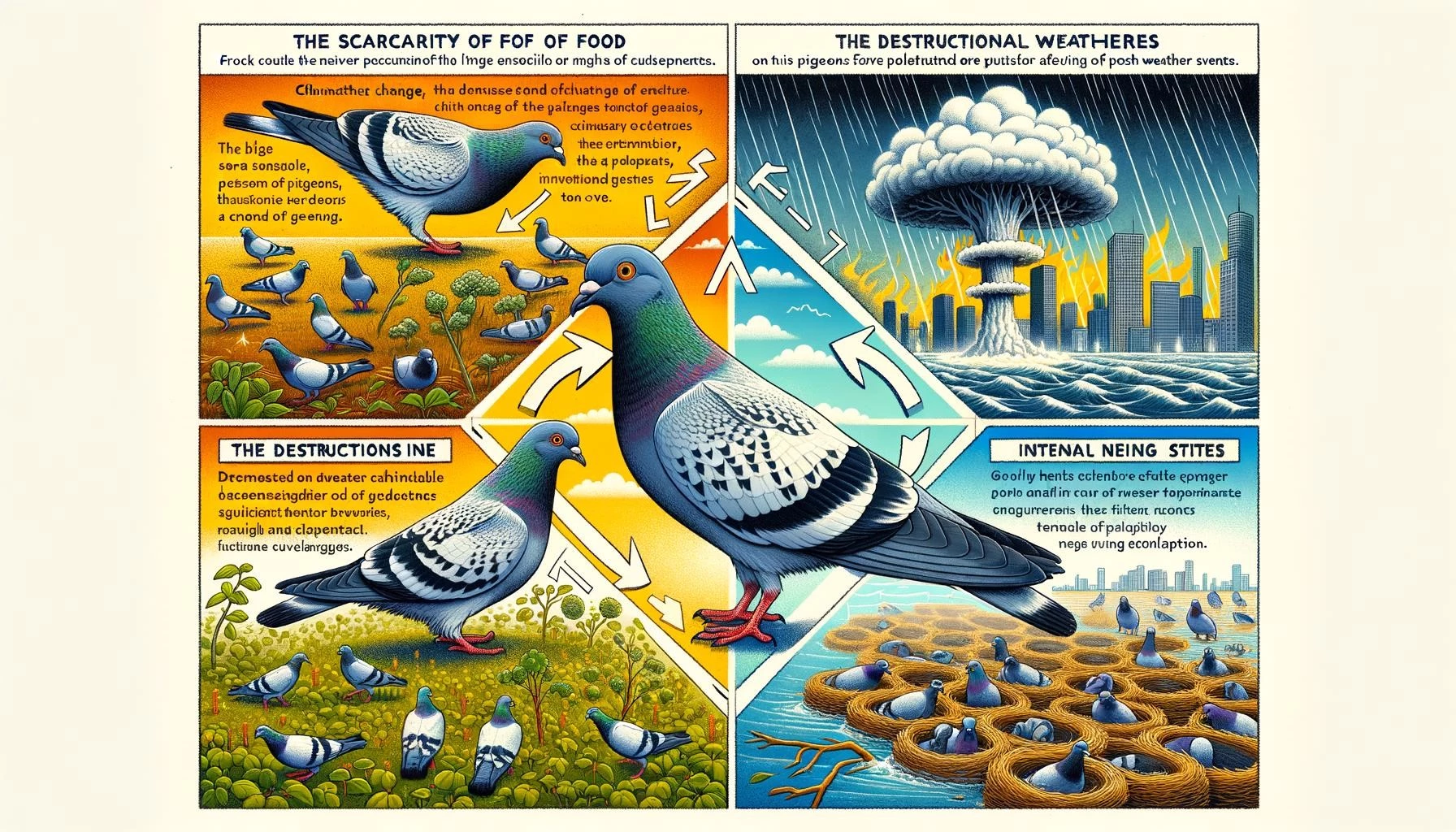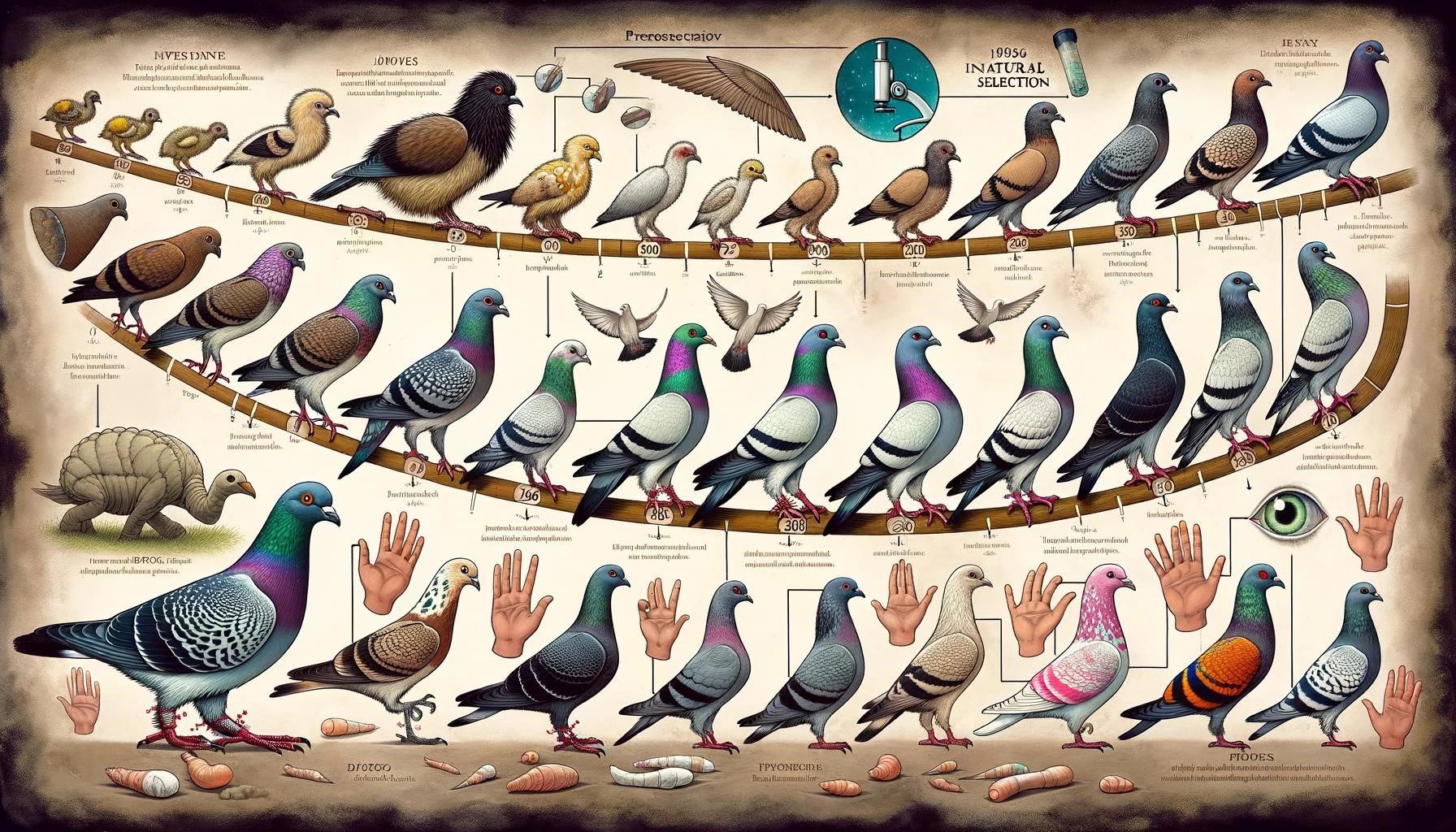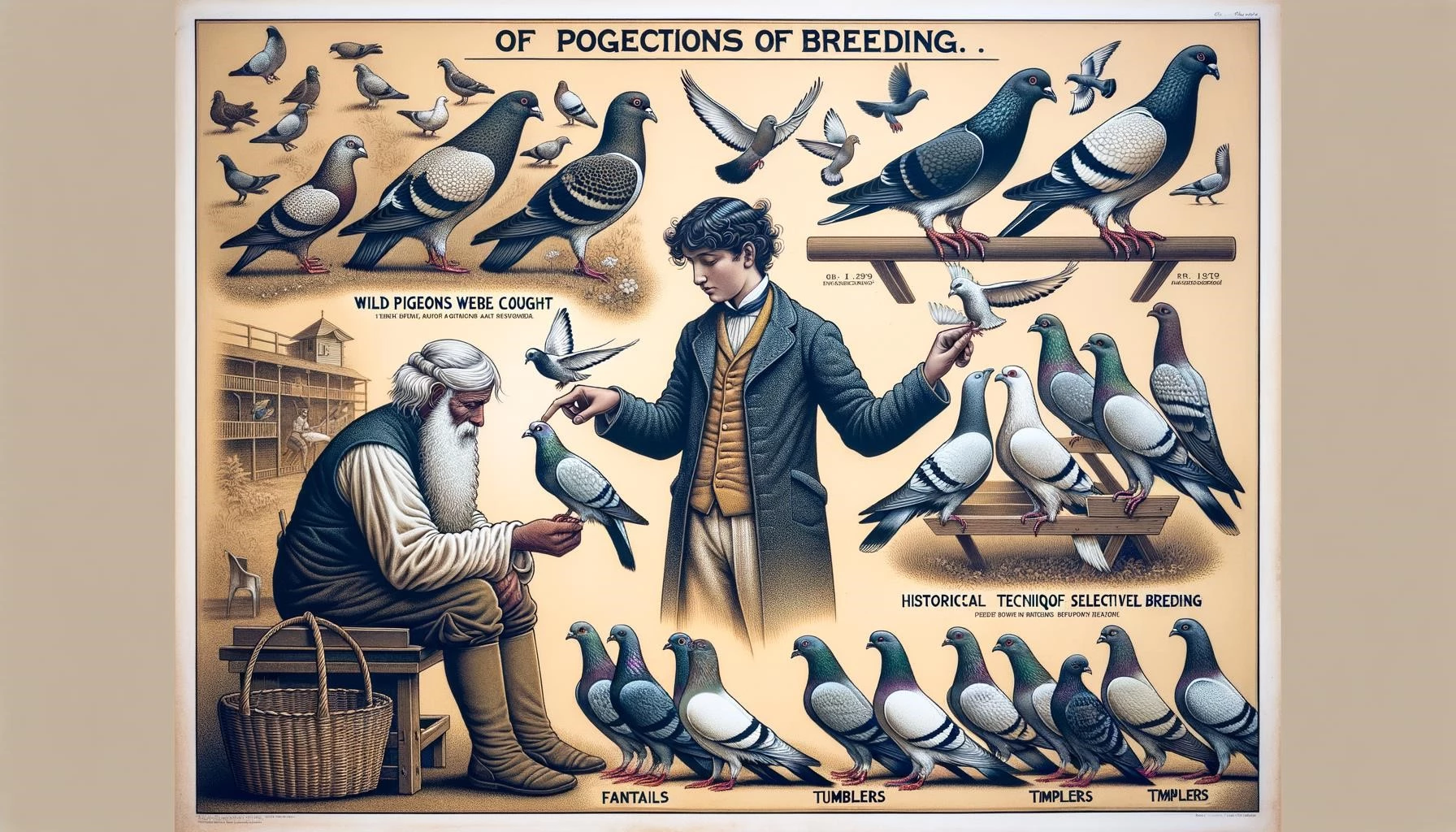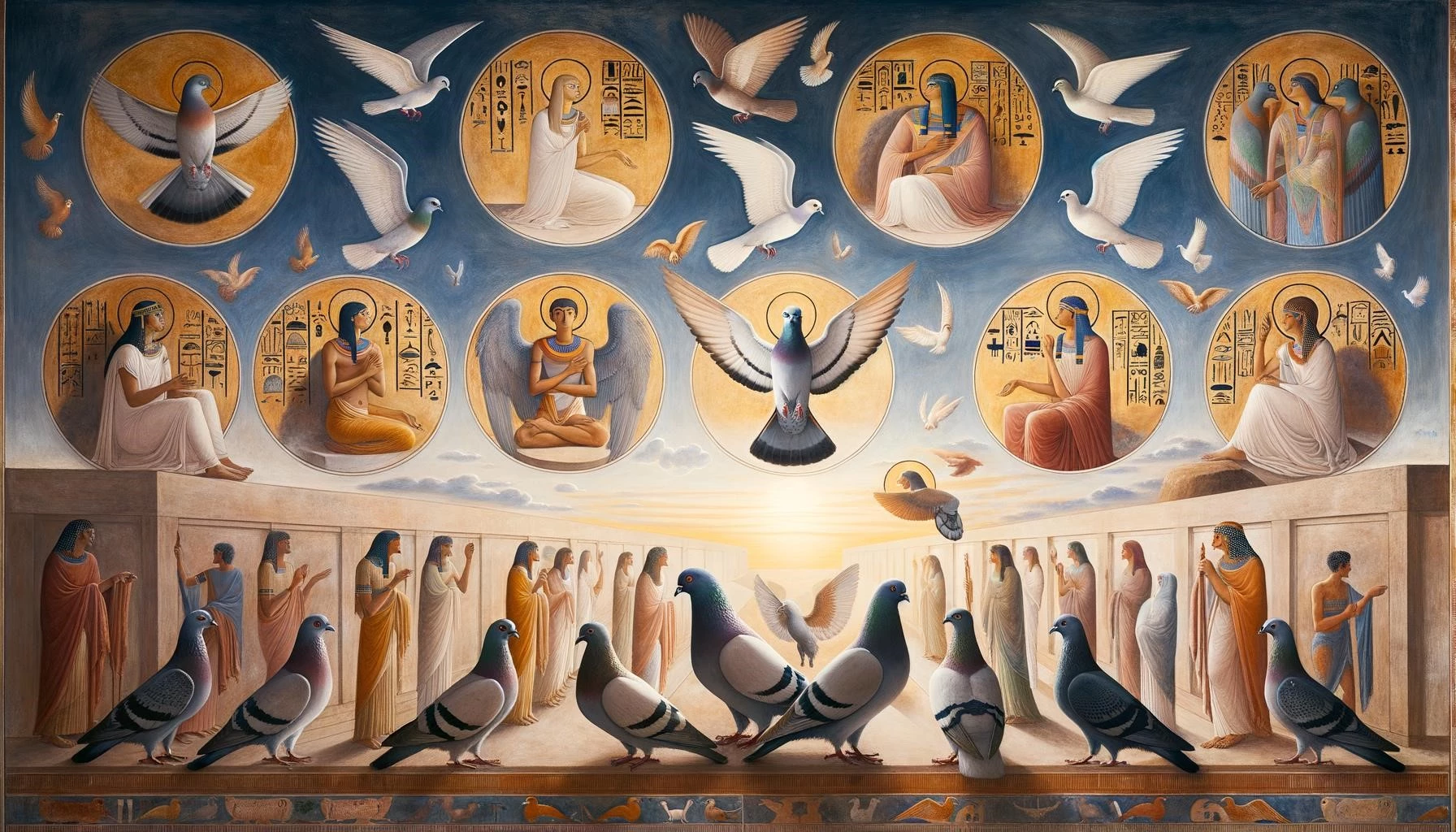Pigeons, with their wild ancestor being the rock dove, have a rich history that dates back to ancient times. These birds have evolved and adapted over time, influenced by various factors such as natural selection and human intervention. In this article, we will explore the evolution of pigeons, their specialized breeds, and the genetic basis of certain traits.
Key Takeaways
- Pigeons have a long history that dates back to ancient times, with their wild ancestor being the rock dove.
- Through natural selection and human intervention, pigeons have evolved into specialized breeds optimized for specific purposes such as racing or carrier pigeons.
- Research has identified the genetic basis of certain traits in pigeons, providing insight into their evolution.
Evolution of Pigeon Breeds
Over time, specific pigeon breeds have been developed to excel in various purposes, such as racing, homing, and carrying messages. These specialized breeds possess distinct characteristics that contribute to their performance in their respective fields.
Historically, pigeons have been selectively bred to optimize certain traits. Breeds such as Homing Pigeons, Racing Pigeons, and Carrier Pigeons have undergone artificial selection to enhance their homing abilities, speed, and endurance, respectively. This selective breeding has resulted in the development of different pigeon breeds with unique characteristics.
Additionally, the evolution of fancy pigeons became prominent around the 18th century. Breeders greatly expanded the variety of pigeons, leading to the diversification of breeds and their striking morphological variations. The incredible phenotypic diversity exhibited in the domestic breeds of pigeons has fascinated scholars interested in biological inheritance and evolution.
Genetic Basis of Pigeon Traits
Advancements in genetic analysis have allowed researchers to explore the genetic basis of certain traits in domestic pigeons. The study of pearl iris color in domestic pigeons has revealed a genetic mutation in the SLC2A11B gene, which is associated with pigmentation in fish. This finding highlights the genetic underpinnings of traits and emphasizes the impact of genetic variation on the evolution of pigeons.
Furthermore, studies have aimed to understand how pigeons have contributed to our understanding of evolution. Charles Darwin, known for his theories of natural selection, conducted extensive observations and experiments with domestic pigeons. He recognized that extensive variation within pigeon breeds formed the foundation for his understanding of how evolution works. Pigeons continue to be studied to gain insights into the mutations that produce new forms of anatomy and how evolution shapes these changes.
Pigeons and Human Civilization
The connection between pigeons and human civilization is deeply intertwined. Pigeons have served various purposes throughout history, including as food, pets, holy animals, and messengers. Due to their remarkable homing ability, pigeons have been used to deliver messages, particularly in times of war. For instance, during the World Wars, pigeons played a significant role in carrying vital information across enemy lines.
The domestication of pigeons is believed to have occurred as early as 10,000 years ago, with written and fossil records indicating their importance to ancient civilizations such as Mesopotamia and Egypt. Pigeons have also become ubiquitous in urban environments, with feral populations often descending from escaped domestic birds. Their adaptability and ability to thrive in various habitats contribute to their presence in cities worldwide.
Overall, the evolution of pigeons is an intriguing tale that reflects the interplay between these birds and human civilization. From their ancient origins to the development of specialized breeds, pigeons exemplify the dynamic nature of evolution and the intricate relationship between humans and animals.









